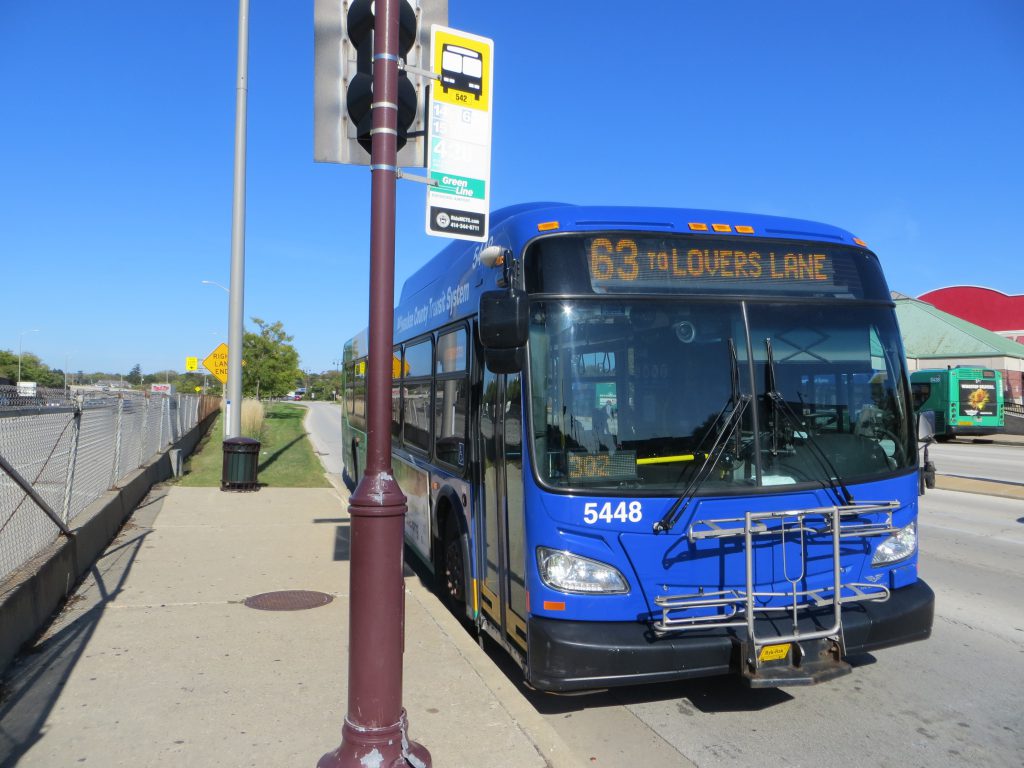How Can Transit Connect To Jobs?
New bus route to Amazon at county's far end or night buses to jobs in more urban areas?
A recent report from the Milwaukee County Transit System (MCTS) spells out new ways the system can connect riders with jobs.
In his 2020 budget proposal, Chris Abele included $100,000 to fund a transit service that runs to the new Amazon MKE2 Distribution Facility at 9700 S. 13th St. in Oak Creek. When the County Board worked on the budget they voted to move that money to an account, to be held, until MCTS came back to them with ideas for the best ways to use those funds to connect workers with jobs.
The report identified some gaps in current MCTS services and laid out two alternatives for how the board could allocate the money, originally budgeted for the Amazon service, to connect county residents with jobs. A major finding of the report was that routes tailored to serve business parks are expensive and inefficient ways to connect workers to jobs.
Long bus commutes with low ridership to isolated business parks are more than three times more expensive than a typical urban bus route. They are also associated with missing work, being late and being less productive. All of which does not support job retention.
So, the report shows, increasing access to jobs in the county can be most efficiently done through improvements to existing services. The task is to addressing the “Hidden Gaps” in the system, as the author of the report, Mitch Harris, organization performance coordinator for MCTS, put it.
Harris’ report considered the advantages of bus service to Amazon and also offered two alternatives for how the board could allocate the $100,000 to increase access to jobs for county residents.
The first is to identify bus routes that serve large number of “late night” jobs, where employees are traveling to and from work during hours when MCTS offers the least amount of service. And the second is to use the $100,000 to raise awareness about jobs that already exist along current bus routes.
Whatever the board chooses, it will have to keep in mind that addressing these hidden gaps will “require a significant financial commitment to address,” as Harris said. MCTS is already projected to have a budget deficit in 2021 anywhere from $5.5 to 7.7 million, Boehm said. So funding for whatever allocation is chosen will require budget action again from the new board and county executive at the end of this year.
Despite the Amazon service sounding like one of the long distance bus routes to an isolated business park that the report deemed inefficient, MCTS officials told the County Board’s Committee on Transportation, Public Works and Transit that it has some unique opportunities. For example, because of Amazon’s commitment to two, 12-hour shifts, buses won’t be empty when they return from a drop off. And using the freeway will cut down on the long travel times that lead to poor worker outcomes.
There are approximately 40,000 jobs in the county that can’t be accessed by bus, not because there aren’t the routes, but because service doesn’t run when employees are going to and from work. Starting around 1 a.m. to 2 a.m., MCTS transit service tapers off until about 5 a.m., Boehm noted. Bar and restaurant workers, custodial workers and hospital staff are employment sectors that could be better served by extended late night service. “Even if half of these jobs either start or end between midnight and 4 am,” the report states, “they are effectively unserved by transit.”
However, increased late night service will not add many new riders, as only 20 percent of workers in the area travel at this time, the report said. Effectively closing this service gap would require a much more significant financial commitment than the $100,000 currently being held by the board.
The other option, that puts the money towards public awareness of jobs already accessible by transit, can be done with the existing staff and “limited budget” MCTS has for promoting transit, but it would take employees away from current transit promotion efforts to focus on this.
MCTS still supports the Amazon service, as does the Amalgamated Transit Union local 998, which represents transit workers. But the new report gives county policy makers new ideas for connecting residents to jobs with the transit system.
If you think stories like this are important, become a member of Urban Milwaukee and help support real, independent journalism. Plus you get some cool added benefits.
Transportation
-
MCTS Adds 28 New Buses
 Jul 13th, 2024 by Graham Kilmer
Jul 13th, 2024 by Graham Kilmer
-
MCTS Designing New Bus Shelters
 Jul 10th, 2024 by Graham Kilmer
Jul 10th, 2024 by Graham Kilmer
-
MCTS Updates RNC Bus Detours To Better Serve Downtown, Riders
 Jul 9th, 2024 by Jeramey Jannene
Jul 9th, 2024 by Jeramey Jannene





















A link to the report: https://milwaukeecounty.legistar.com/View.ashx?M=F&ID=8169335&GUID=E4E31E1C-C1AA-44E7-B942-6D81688C1880